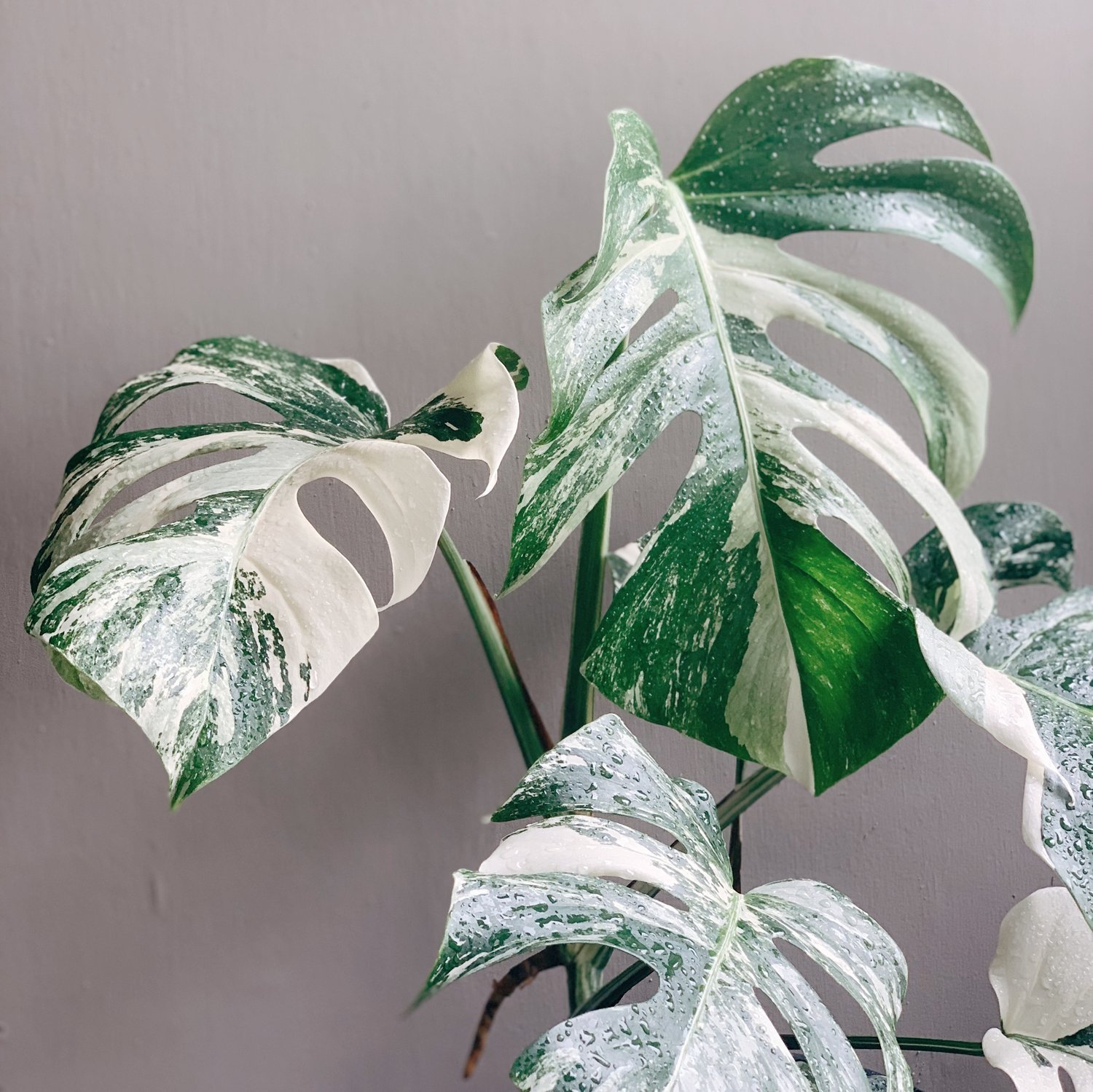Variegated plants: a beginner’s guide
Variegated plants, those plants with the white or yellow spots, stripes, or streaks you’ve probably seen on Instagram lately, are a hot but rare commodity these days. Maybe you’ve thought of buying a variegated monstera or considered the ways to cause variegation in your own plants at home. Before you buy (or attempt to radiate your plants), there are a few things to know about these unique genetic mutations.
What is variegation, how do you spot it?
Variegation in plants is when the appearance of the plant is altered by a genetic mutation that causes irregularities in the production of chlorophyll. These mutations manifest themselves as those wonderful white spots or stripes that can make a plant really stand out. So those leaves that become variated with colors like white, yellow, or light green are a result of less green pigment being produced when the chlorophyll process becomes disrupted.
We spotted this beautiful variegated alocasia at Plantclub’s recent visit to IPM Essen.
What causes variegation, can a plant develop variegation?
There are a number of reasons a plant may become variegated but they’re not methods we encourage trying to replicate at home.
Illness: Certain plant viruses like the mosaic virus can cause a plant to variagate by reducing the amount of chlorophyll in its leaves.
Radiation: If a plant is exposed to certain types of harsh radiation, its DNA can be altered resulting in variegation.
Gene splicing: The altering of a plant’s genome to cause variegation.
Chimerism: Splicing two sets of genes together.
Variegation can be caused by any mutation to the plant’s genes that disrupt its chlorophyll production (it can even occur naturally!). Most methods of inducing variegation should not be practiced at home
Variegated monstera may be the most sought after variegated variety.
How can you encourage variegation in indoor plants?
Care for variegated plants can differ from other normal plant regimens. In fact if you don’t care for your variegated plants properly they can lose their variegation. Here are some tips for maintaining your variegated plant’s happiness:
Lighting: Keep the plant well lit. Because variegated plants produce less chlorophyll they require a little more help when it comes to processing energy.
Consistent environments: Try to put your variegated plant under as little stress as possible and keep light, watering, temperature, etc. consistent.
Pruning: If you want to continue encouraging the growth of variegated leaves in your plant, try pruning the non-variegated leaves out.
Keep in mind that yes, variegated plants can be propagated! So if you’re trying to fill your house with variegated plants, you can just start off with one.
We love the variegated leaves of a Happy Leaf, available now in the Plant Store.
Variegation and you
If you’re in the market for variegated houseplants, there are certain species that take on variegation more than others so look out for monstera, monstera deliciosa, alocasia, dracaena, pothos, calathea (prayer plants), or the stunning Happy leaf.
Variegated plants can be stunning and unique features to any home or office. If you notice your plant developing variegation in its leaves, you’ve hit the plant jackpot. All we can recommend is attentive care, and propagate, propagate, propagate!
Aglaonema crete has unique variegation of bright pink and is a great start to your variegated collection. Available now in the Plant Store.
Plantclub.io provides you and your colleagues with the benefits of plants, wherever you work. Rent office plants and transform your space into a green oasis, with flexible monthly membership options to suit your size. Diversify your employee perks with a dedicated company store, where you can give green gifts and your team can buy plants for their home office. Book a time to chat with us today.





